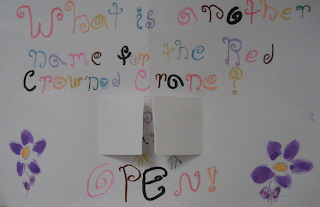Do students and families in your school community begin the year with the same warm reception? Is it time that we revisit the way we start school with respect to welcoming students and families? Massachusetts' new educator evaluation system is broken down into several categories, and one of those categories is Family and Community Engagement.
Our school already employs many, many processes to engage the family and community including regular communication via newsletters, eblasts and news reports, a school council, curriculum nights, parent conferences, classroom open houses and special events, PTO events, musical and theater performances and more. But, I wonder if we would do an even better job if we thought about the way we start school as that's the time of the year when families and students are most ready to listen, join and learn about year ahead.
What would an elementary school student orientation look like? Who would participate? When would it happen?
I suggest that the first day or two of school be devoted to orientation. I think our State should require that every parent has a day off from work to attend their child's orientation day of school. The orientation would have the following components:
- Students and families would be warmly greeted with a healthy breakfast prepared by our schools' food service department. That department would also have a booth open for questions and information regarding free and reduced lunch, lunch options, payment systems, healthy snacks and more.
- The principal and other administrators would kick off the day with a welcoming, short speech.
- Students and families would visit the classroom(s) and listen to the teachers' introductory talk. They would receive a packet of important, start of school information and the chance to complete necessary school forms at that time.
- Students and families would also engage in a number of fun activities and content introductions with specialist teachers.
- A picnic lunch would be provided by the PTO to give families a chance to informally get to know each other. The athletic staff would organize games and activities.
- The day would have a joyful atmosphere and attitude with a focus on the importance of teamwork and school success.
- Families would have the chance to meet with support personnel such as guidance, ELL, the school nurse and social workers.
- Local businesses could donate items for a give away bag of materials that support a successful school year.
Just yesterday, my husband, who works in public health, came home with high praise for an inner city principal he was working with. He remarked that the principal's one concern was how to get more families involved in their children's education--I believe that this mandatory, festive orientation day is a good start to solving this problem and boosting investment in schools across America. Additionally, as I analyzed students' scores last night, I was struck again by the power that strong home-school relationships have on student success and engagement.
If the State were to embrace this initiative, what would be a catchy title? In addition to lead time and planning, what would your school need to make this day a success? Perhaps the State could foster this day by contributing dollars to every school who wants to try this idea out in September 2013, or local foundations could support the event for specific schools systems. Does your school already employ an orientation day like this--a day that empowers and engages students and families? How would you involve your school's PTO and community organizations such as the library, local health center and other important organizations in this event?
An orientation at the start of the year can probably replace other activities your school promotes in the early months of the academic year to foster camaraderie and team. Let me know what you think? I believe this idea has potential for strengthening the work we do with children and families. Do you agree?
You have read this article with the title June 2012. You can bookmark this page URL http://the-bookself.blogspot.com/2012/06/orientation-bright-start-for-learning.html. Thanks!






























